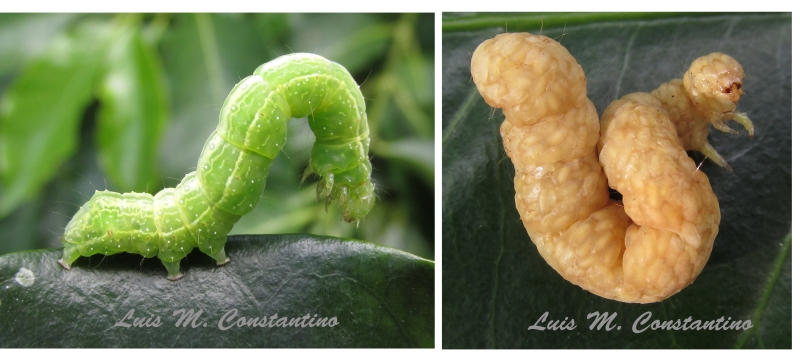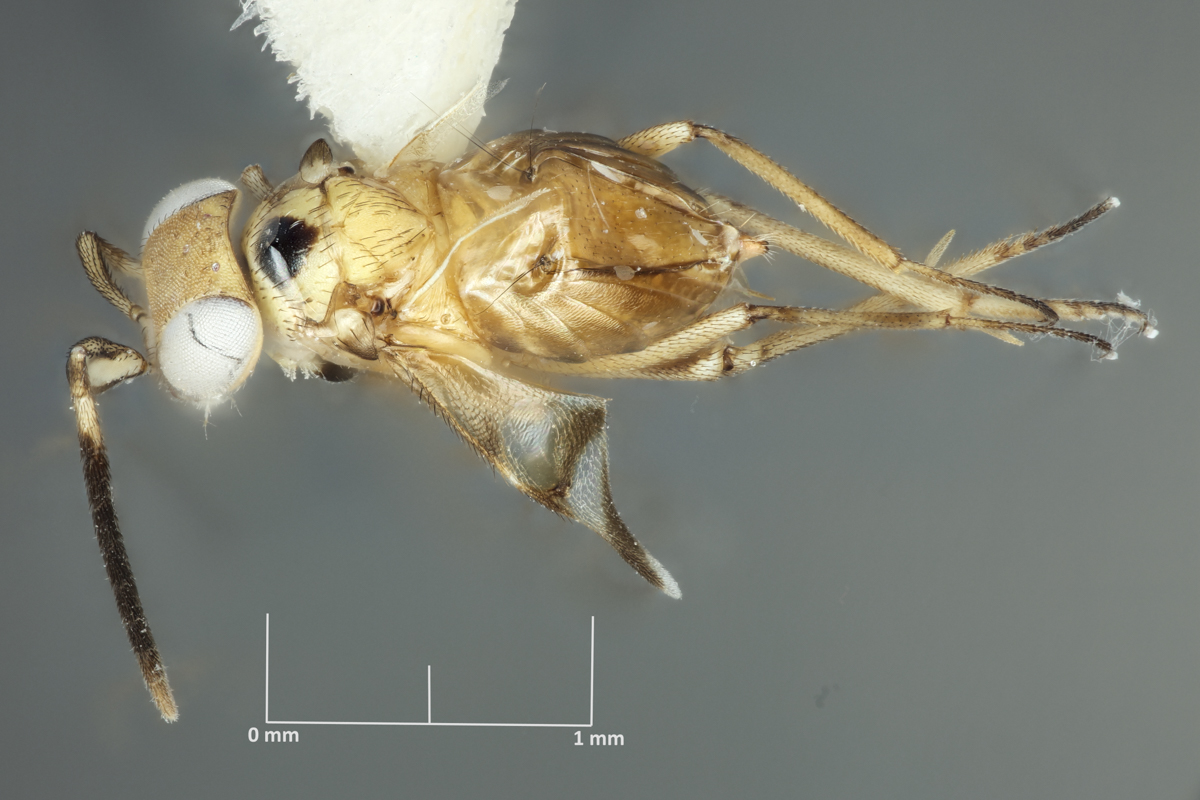
Family Encyrtidae
Introduction
Encyrtidae are one of the largest families of Chalcidoidea, with 460 genera and over 3735 species. Species in this family are parasitoids of many different orders of insects and other arthropods, but many encyrtids attack mealybugs, which are common agricultural pest.
Biology
Many of these parasitic wasps are attack mealybugs, scale insects in the superfamily Coccoidea that are commonly found in gardens and crops. Mealybugs often appear on the stems, leaves, and fruit of plants and can be a difficult pest to get rid of. They use their sucking mouthparts to draw nutrients, in the form of sap, from plants to feed. Encyrtidae will deposit one or more eggs into its host. The larva will hatch and live inside the host until it is ready to pupate and emerge as an adult. While it is living inside the host, it feeds on the host without killing it, allowing the larvae to completely develop into an adult with a constant food source.
Economic Importance
Populations of any species can rotate through boom and bust cycles. Agricultural pests such as mealybugs and aphids can have huge booms in population sizes that can cost agricultural companies millions. Members of the family Encyrtidae have been used as biological control agents to help fight these damaging populations of mealybugs. For example, Anagyrus pseudococci is the most common commercial parasitoid to control mealybugs. It was originally introduced in California in 1934 and then again in 1953. Since then it has been established in California and used as biological control for mealybugs, such as the invasive vine mealybug (Planococcus ficus) and the citrus mealybug (Planococcus citri).
Examples
Epanusia sp.
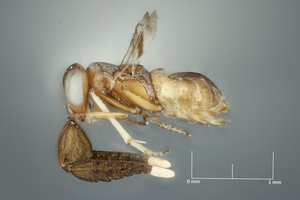
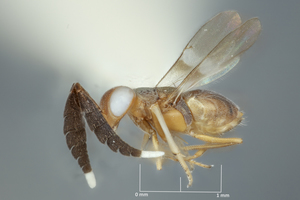
Epanusia are parasitoids of mealybugs in grasses, and they are commonly collected in grassland areas. Females are usually brachypterous (with very short, non-functional wings), because they spend most of their lives searching for mealybug hosts at the bases of grass plants. Males on the other hand, have fully functional wings that they use to search out available females. Sometimes, however, females in the same populations are fully winged, as in the picture on the right (both were collected in the same park in College Station, Texas). This is an example of a “polymorphism” in a natural population. As seen in the pictures, they have extremely large and bulky antennae that help them to locate the mealybugs that they will lay their eggs in. Can you imagine having antennae almost as long as your body?
Neodusmetia sangwani
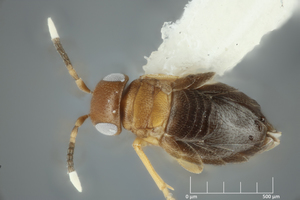
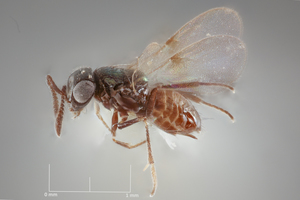
This species was introduced into south Texas from India in 1959 as a biological control agent for Rhodesgrass mealybug, a serious pest of turf and forage grasses. It was quickly established in Texas, resulting in estimated savings of over $275 million. It was subsequently introduced to northern México and the Imperial Valley of California. Interestingly, this species is now extremely common on the campus of U.C. Riverside, where students have collected large numbers in yellow pan traps.
This is another case of a species with wingless females (on the left) and winged males (on the right), an example of “sexual dimorphism” which is very common in Encyrtidae.
Copidosoma floridanum

Copidosoma species are parasitoids of caterpillars. This is an example of a species that is “polyembryonic”, in which a single egg is laid in the host. The larvae then divide and multiply to become hundreds, or even thousands of individuals, which eventually completely consume the inside of the host insect. In the image below, a healthy Trichoplusia ni larva is seen on the left. On the right is an example of a T. ni larva that has been parasitized by a polyembryonic endoparasitoid, such as our C. floridanum. The body is swollen with larvae that was all produced by a single egg.
